(Further) Adventures with Marfawitz
We often go south on our road trips – Pinto Canyon, Big Bend, Presidio. This time we turned north and explored the Davis Mountains.
Welcome to another installment of Life Its Ownself. I offer insight, analysis and context on Texas and national politics, as well as entertaining stories of life its ownself in the Lone Star State. If you like what you read, please 1) smash the Like button at the bottom of this installment, 2) subscribe to this newsletter, and 3) tell your 1,000 best friends to read and subscribe. Also, feel free to comment below. I’d love to hear your thoughts.
But first, your moment of Zen … by my friend Mark Cunningham, a sneak peak at the approaching Comet Tsuchinshan-ATLAS. This photo was taken before sunrise and with the moon, so some of the comet’s brightness is washed out. The comet will reach maximum visibility this coming weekend, October 11-13. Look to the western sky soon after sunset.
Saturday, October 5, 2024
Quote of the Week:
One of the great blessings of a) retirement and b) living in West Texas (most of the time, anyway) is the ability to do whatever the hell I want. One of my favorite whatever-the-hell-I-wants is to take little day trips exploring the wonders of the Trans-Pecos region, from the magnificent Chisos Basin of Big Bend National Park to the enchanting waters of the spring-fed pool at Balmorhea, and a thousand points in between.
Although I like the occasional solo day trip, I enjoy wandering around the region even more with my friend Marfawitz. He lives with his lovely artist wife in Marfa, which is 60 miles west of Marathon as the vulture flies. We have enjoyed many day trips together, traversing hundreds of miles off the beaten path. I’ve written before about our trip to Lobo, the ghost town we were planning to buy until his long-suffering wife put the kibosh on that. It was probably for the best: my idea was to open a restaurant that would specialize in clam chowder and gazpacho, depending on the season. We would be unique in the region, although there are many good reasons why a restaurant with such a specialized menu does not, and never will, successfully exist in the desolate northern reaches of the Chihuahuan desert.
Anyway, Marfawitz and I continue our occasional wanderings about the Trans-Pecos. Not for us the big, air-conditioned cab of a Ford F-250 with 4-wheel drive and leather seats! No, siree! We have cloth seats, in keeping with the pioneer spirit of the people who made this country.
Thursday was a beautiful day, cloudless and mild with the temperature hovering around 80 degrees. Our jumping-off point was Fort Davis, the county seat of Jeff Davis county. Both are named for the treasonous president of the Confederacy, Jefferson Davis. Of course, you can’t swing a bobcat in Texas without hitting a county named after some disgraced participant in the Unpleasantness Between the States.
Nomenclature aside, Fort Davis is a lovely town. It sits at 4,961 feet, which is almost a thousand feet higher than Marathon. It is nestled at the edge of the Davis Mountains, which are a scenic and environmental wonder. The town is nestled in the crook of Sleeping Lion Mountain, a name that naturally suggests itself to a viewer.
The town has a lovely county courthouse, topped off by an elegant clock tower. Like many a county courthouse in Texas, its main façade faces south, a final f*ck you to the postwar North. The clock, like many things in Texas, is right twice a day.
(The Jeff Davis County Courthouse)
The town has a main street, at the south end of which is the Hotel Limpia. The Limpia is one of the five great turn-of-the 20th hotels of the Trans-Pecos, the others being the Gage in Marathon, the Holland in Alpine, the El Paisano in Marfa and the El Capitan in Van Horn.
(The Hotel Limpia in downtown Fort Davis)
The town is also a medical center, home to the world-famous Ojinaga Brain Depository. I don’t know about you, but it does my heart good to know medical research is thriving even in the far reaches of the Trans-Pecos.
The main attraction in Fort Davis is Fort Davis National Historic Site, where Buffalo Soldiers fought off Indians and kept travelers and residents alike safe in the sparsely-populated region during the last half of the 19th century. (I appreciate the irony that the Buffalo Soldiers’ most famous encampment is a fort named after the Confederacy’s president.)
(The parade ground and the modest houses of the officers at Fort Davis)
From Fort Davis, Marfawitz and I headed north on Highway 17 to Balmorhea. NOTE: This is one of the most beautiful drives in Texas. The road winds north along Limpia Creek through the valleys of the eastern Davis Mountains. It goes through Wild Rose Pass, where in 1871 a caravan of Irish settlers was set upon by a huge field of wild roses, which consumed them and left no trace of their existence. Eventually, the carnivorous roses were tamed, and the route became navigable. A plaque marks the spot, giving a sanitized version of the grisly tragedy that gave the pass its name. Fortunately, the roses were not in bloom in this late summer, and we passed through without incident.
(The marker at Wild Rose Pass.)
(Looking south, back towards Fort Davis, from Wild Rose Pass.)
(Looking north, towards Balmorhea, from Wild Rose Pass.)
(Marfawitz and I, undaunted at Wild Rose Pass.)
We continued until we reached Balmorhea State Park, home to the second most-famous spring-fed outdoor swimming hole in Texas. In addition to the pool, the park boasts the San Solomon Motor Courts, cabins built by the CCC in the 1930s and recently renovated. On this autumn day, there were only a few families picnicking along the banks of the great pool, and they hardly gave us a nod.
(The magnificent spring-fed pool at Balmorhea State Park)
From there it was not far into Balmorhea proper, a lovely hamlet of some 384 souls (2020 Census). The town has a charming canal running through it, with picnic tables and play areas running alongside it.
Famished from our exertions thus far, we stopped at the legendary La Cueva de Oso restaurant for lunch. There we had hearty Tex-Mex lunches, the kind that require one to sit calmly in digestive appreciation of the meal one’s just eaten.
(Marfawitz and I after a superb Tex-Mex lunch.)
We then proceeded to Balmorhea Lake, which was the biggest surprise of the trip for me. In this part of Texas, one does not expect to see freshwater lakes of any size, but there it was:
(Balmorhea Lake, viewed from the dam, with the Davis Mountains in the distance.)
(Panoramic view of Balmorhea Lake.)
Marfawitz, whose curiosity is one his main virtues, had visited before and even gone to the fishing shack where one can procure licenses, picnic table reservations and, presumably, bait. However, during our visit the shack was closed.
We departed Balmorhea to begin the second leg of our trip. We drove west to Kent, now a ghost town and FedEx staging point along Interstate 10. I visited Kent maybe 15 years ago and was entranced by the old mercantile general store, which had a magnificent tin ceiling. Unfortunately, the building is a ghost now, boarded up for years.
From Kent, we headed south on Highway 118 into the Davis Mountains. The first 20 miles or so cross the desert floor, with the long straightaway leading into the mountains.
(The road goes on forever. Highway 118 south of Kent, heading towards the Davis Mountains.)
Eventually, we rolled up into the mountains, past the McDonald Observatory and on to that long, lovely descent into Fort Davis. We passed the entrance to Davis Mountains State Park, home to the fabled Indian Lodge. The view from atop the Skyline Drive switchback is stunning – a subject for another day.
We ended up where we started, in Fort Davis six hours later. We’re already discussing further adventures around the Trans-Pecos, including Sanderson and the Elephant Mountain Wildlife Management Area (WMA).
Anyone want to ride along?






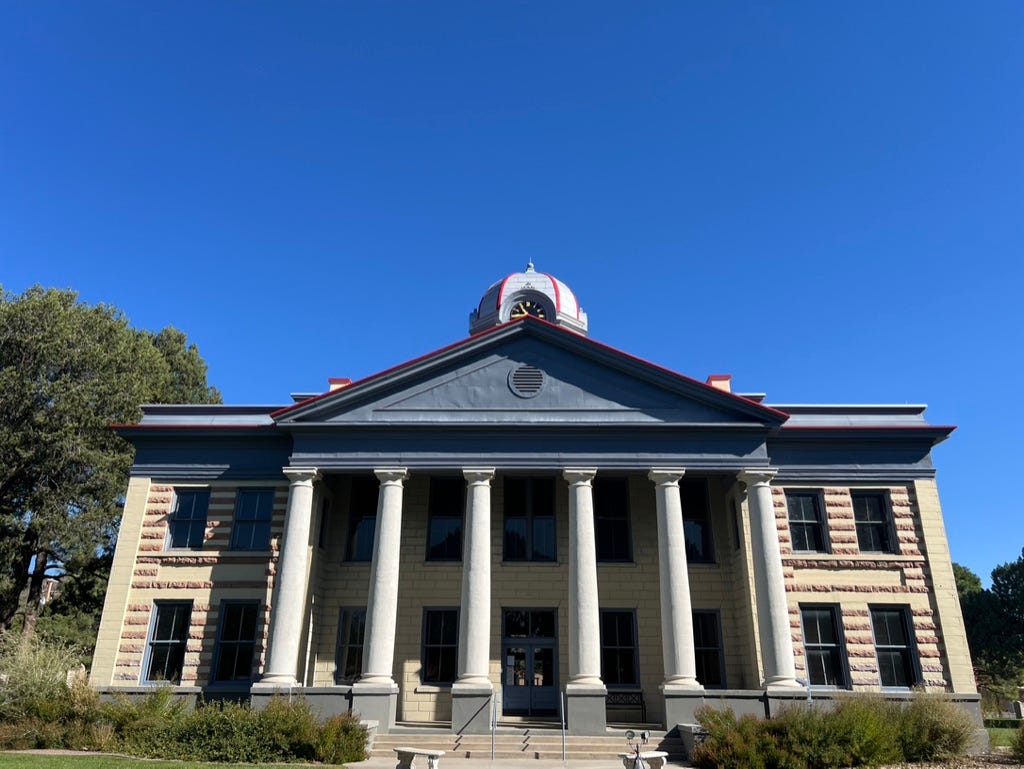
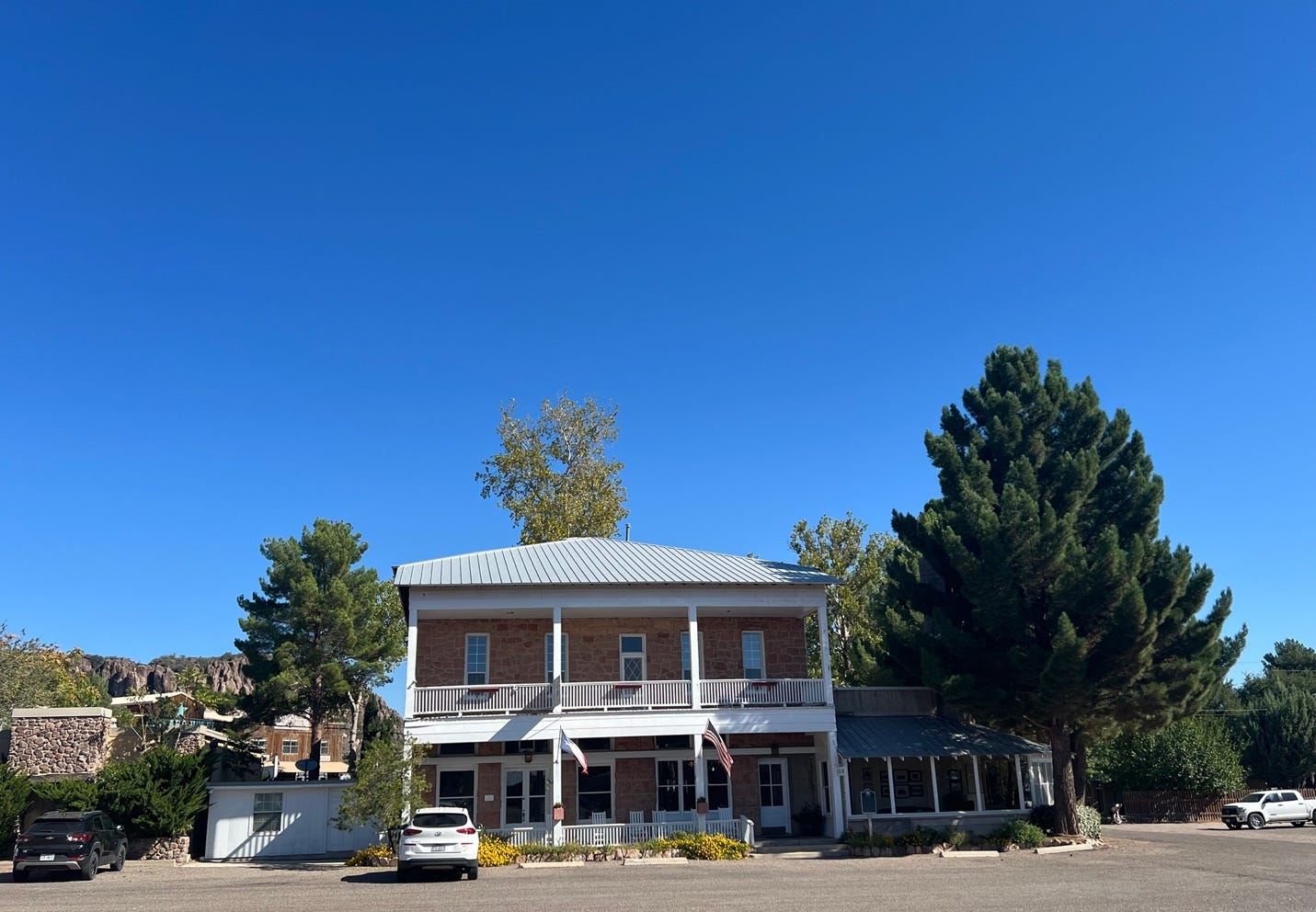
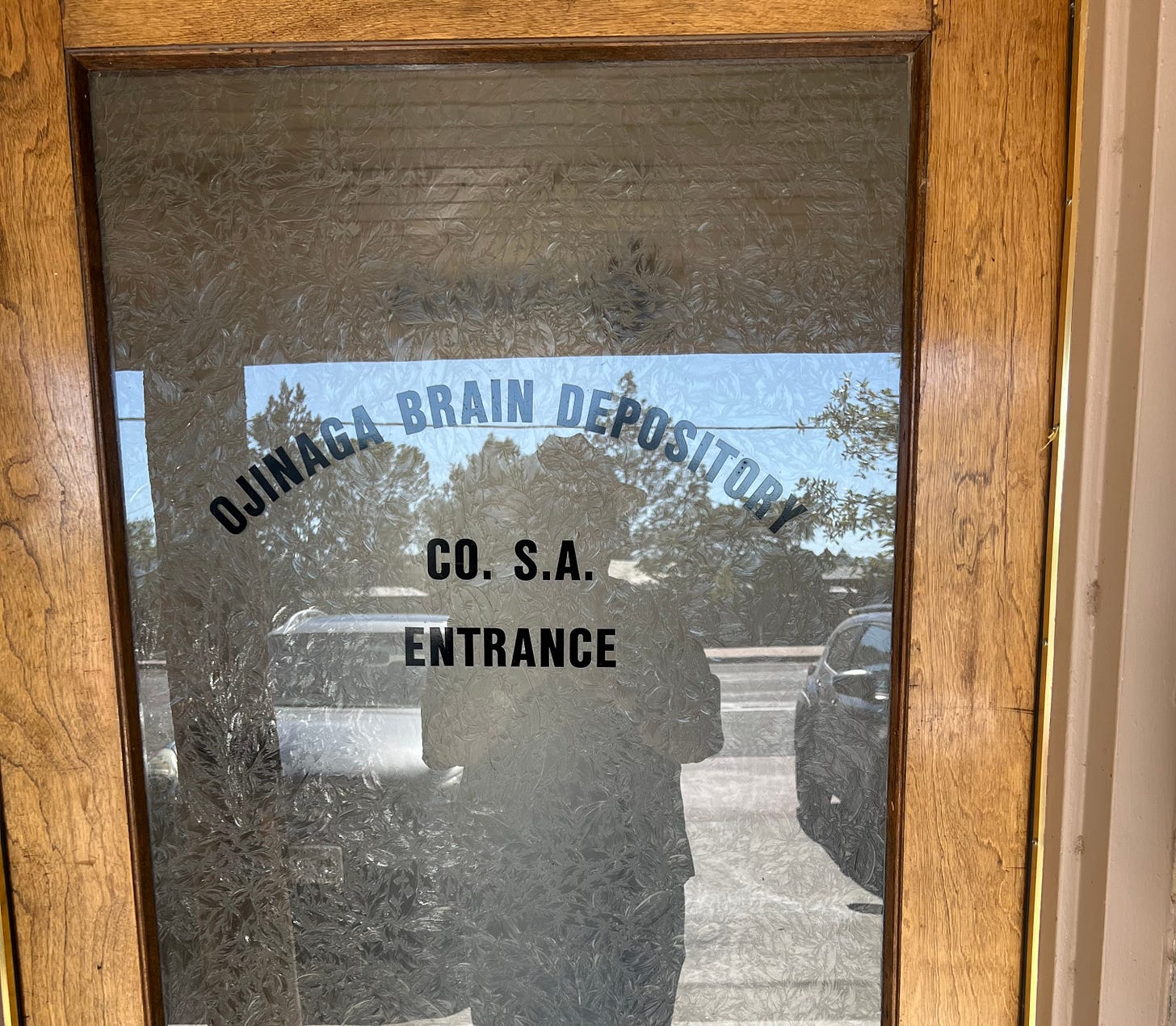
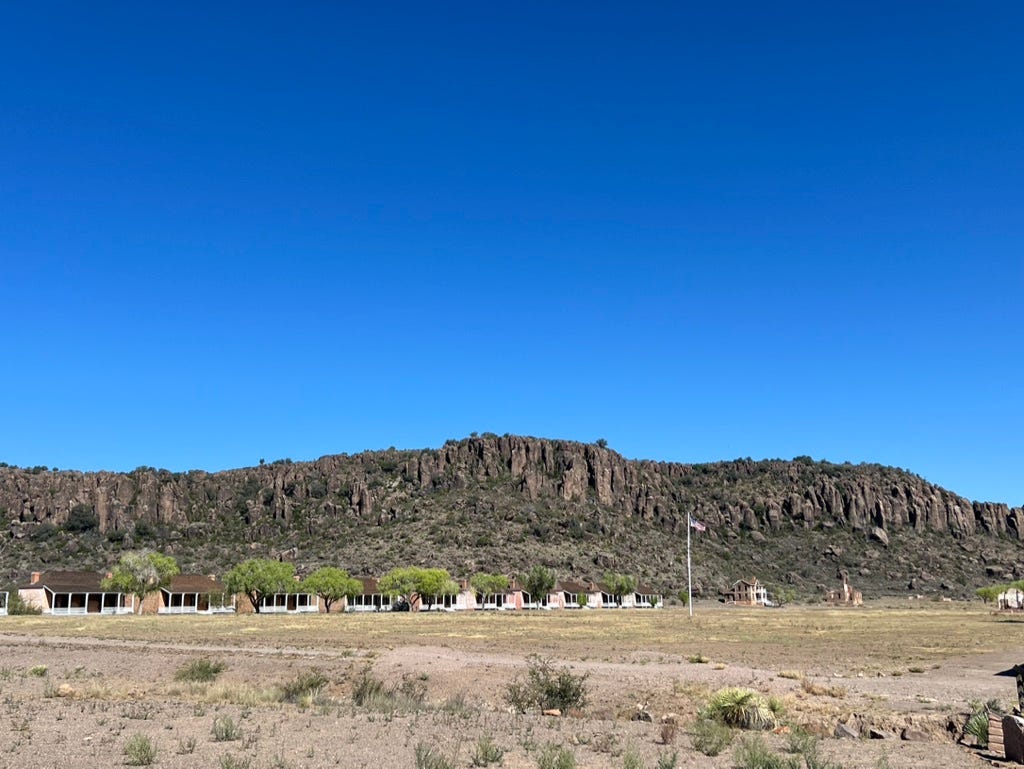
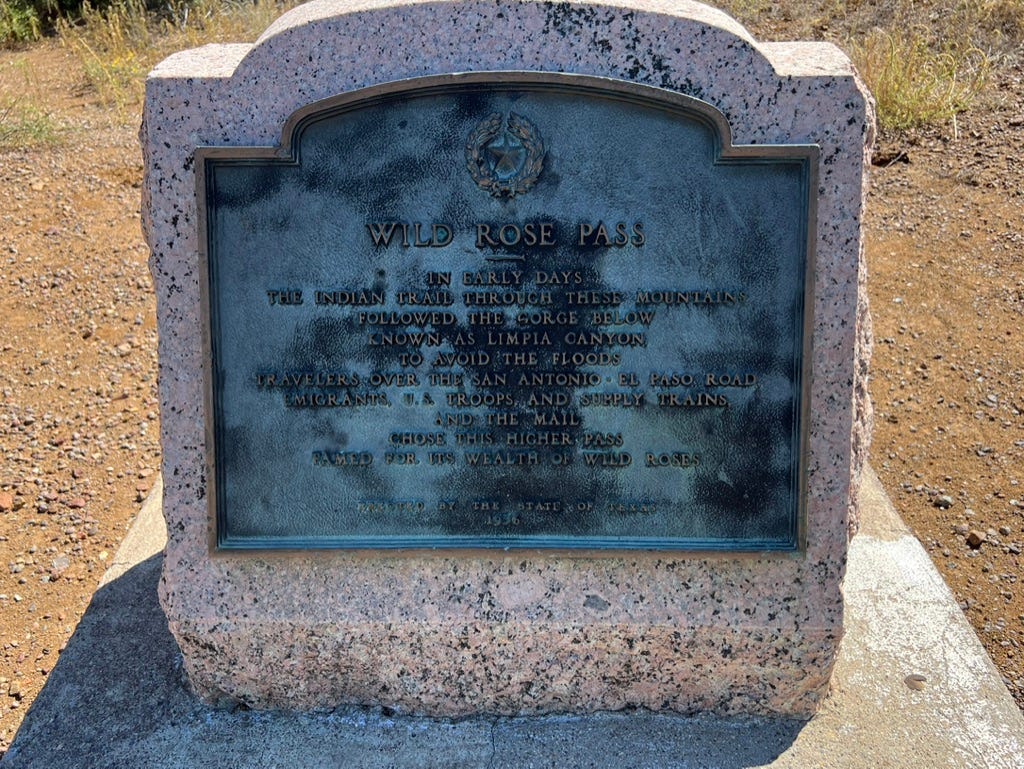

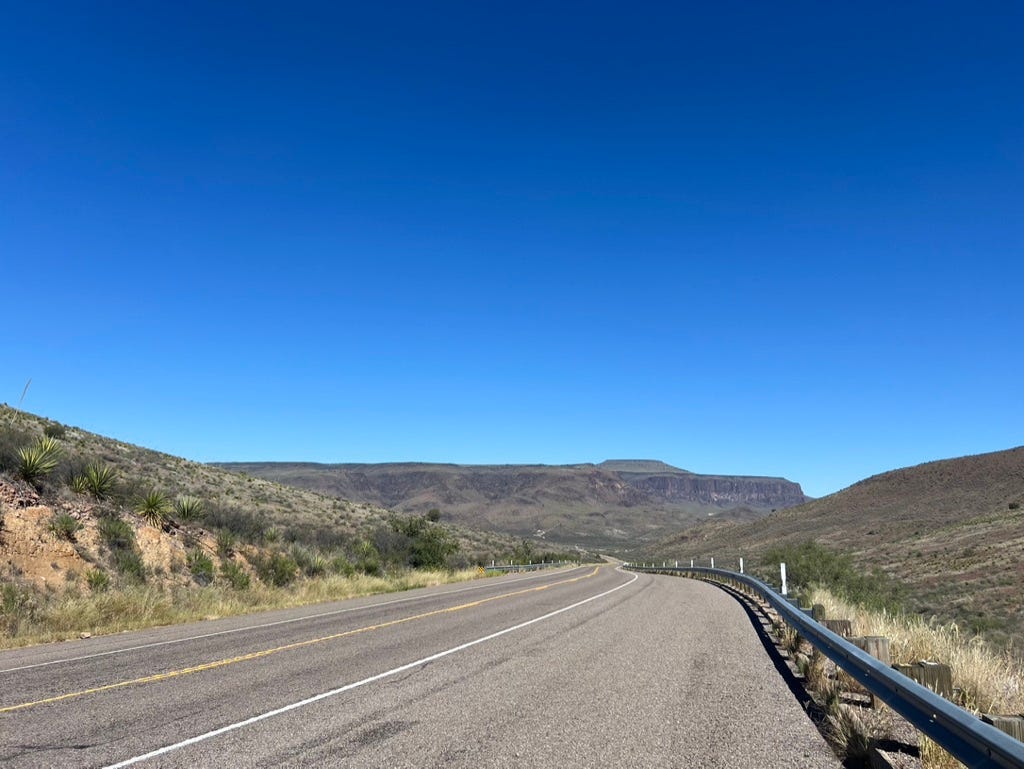
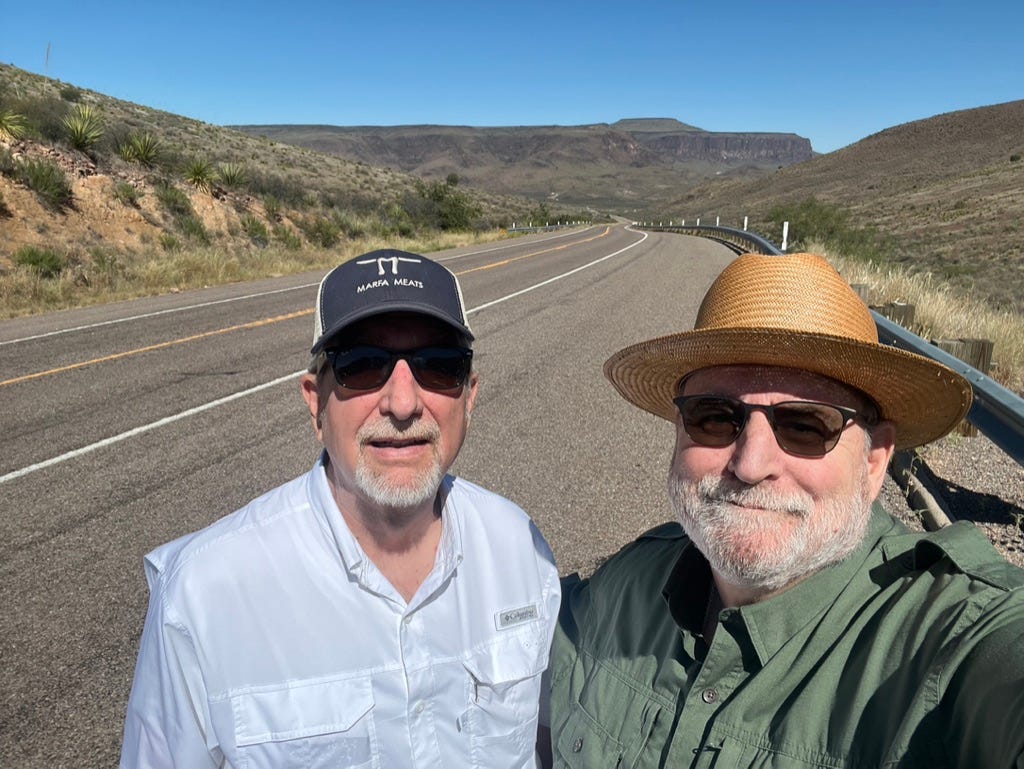

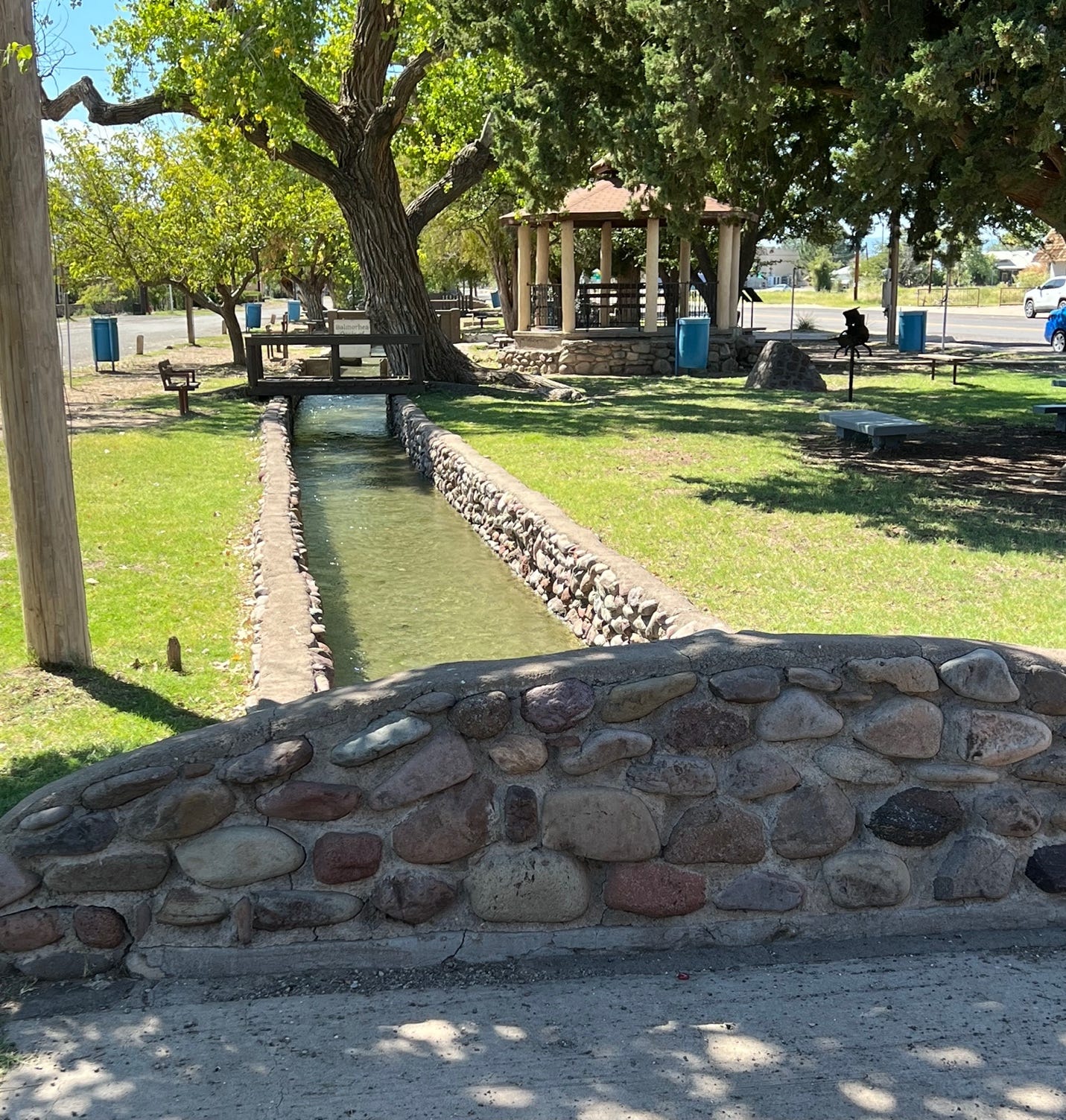
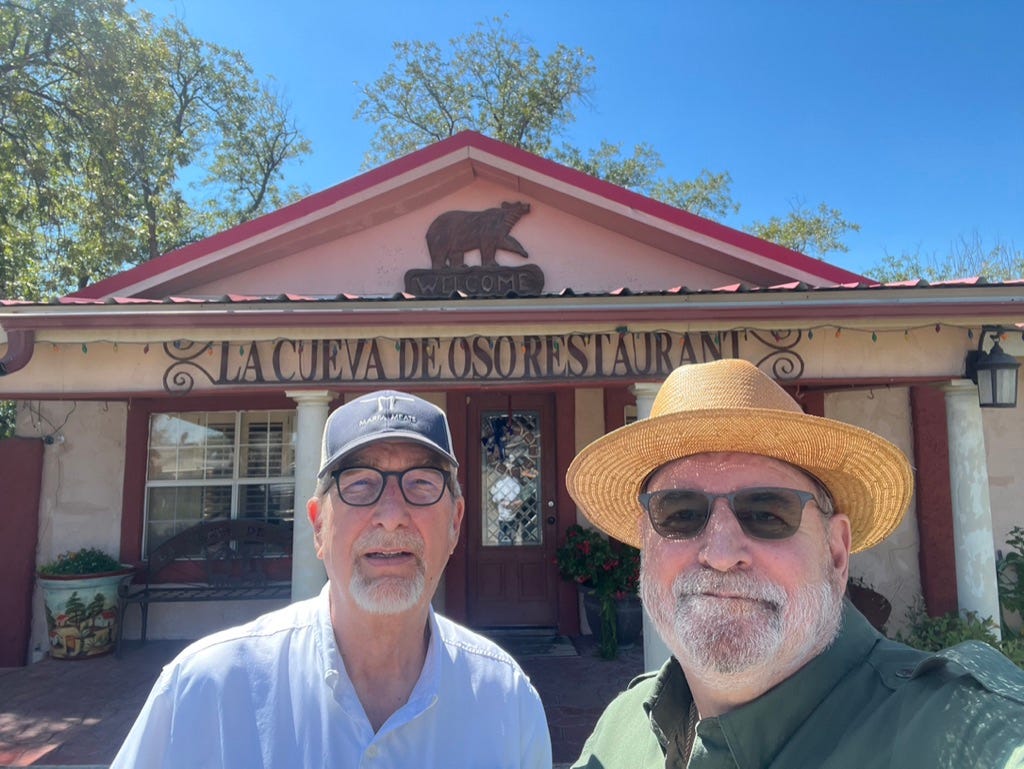
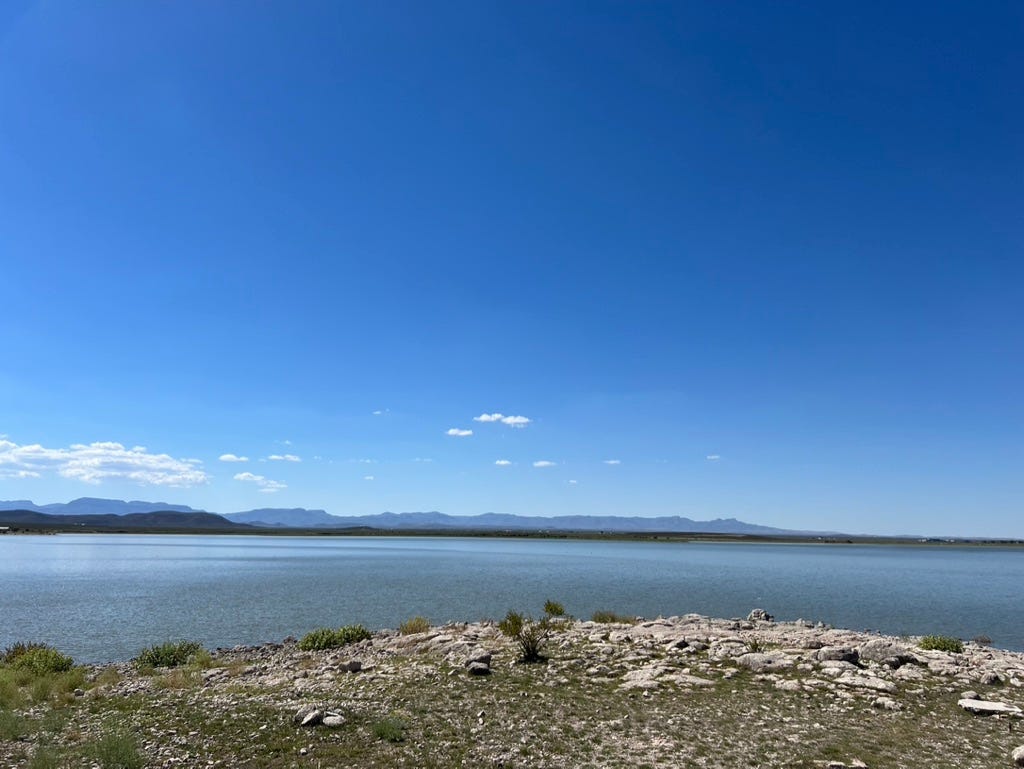
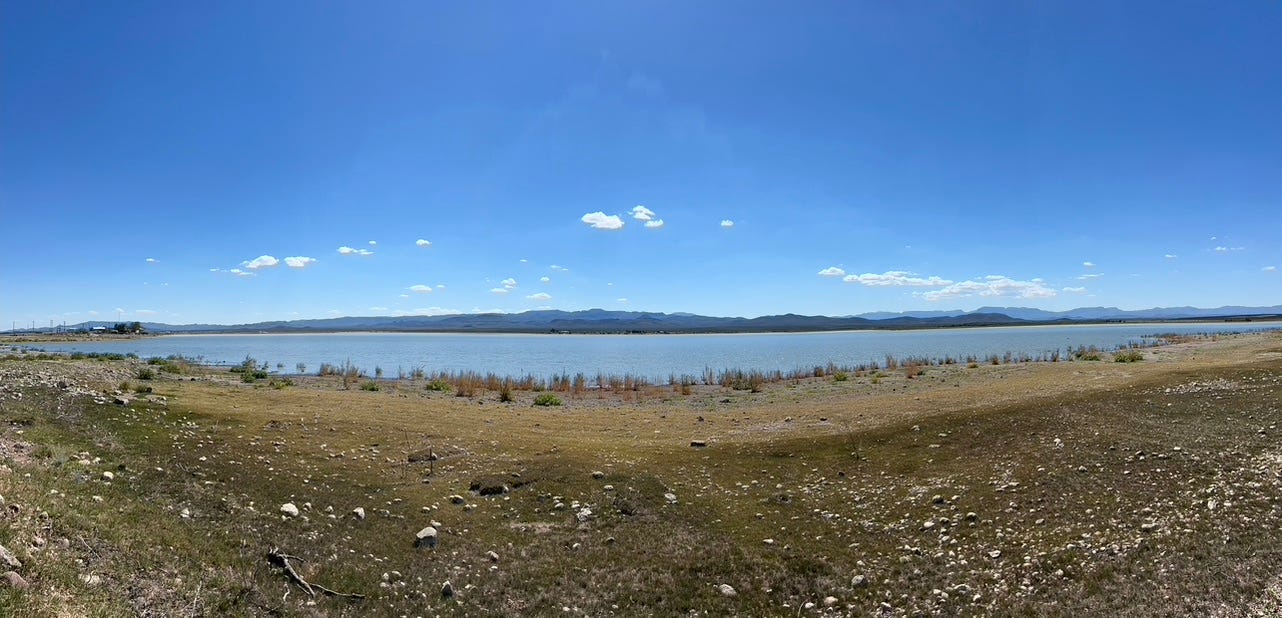


Wonderful travelogue of a beautiful part of the world.
Thanks for taking me along for the ride virtually. It is one that June and I have repeated. We usually quarter at the Limpia or Indian Lodge.
The fort was named in honor of the U.S. Secretary of War in 1854 before the man dishonored his oath of office. The county was organized in 1887 and named for the traitor.
The first African American to graduate from West Point served at Fort Davis but was discharged after accusations concerning missing commissary funds. Henry Ossian Flipper was posthumously pardoned by President Clinton.